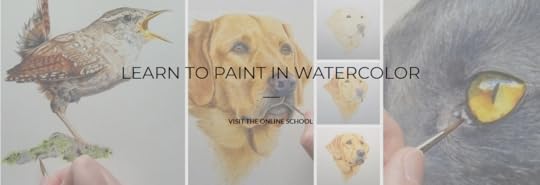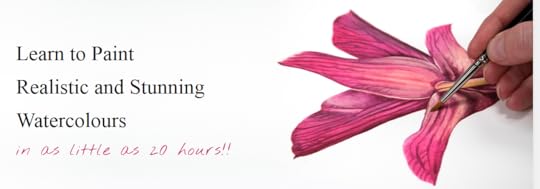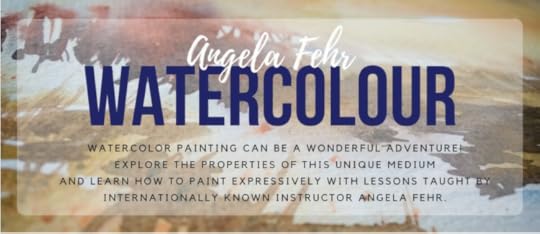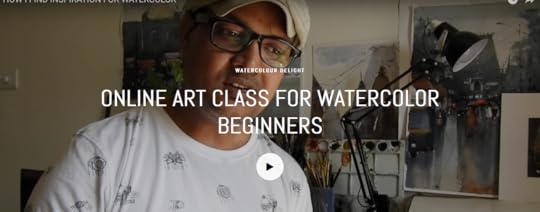Cory Huff's Blog: The Abundant Artist Goodreads blog, page 17
October 4, 2018
Abstract Artist Betty Krause- Connecting With Collectors on Social Media
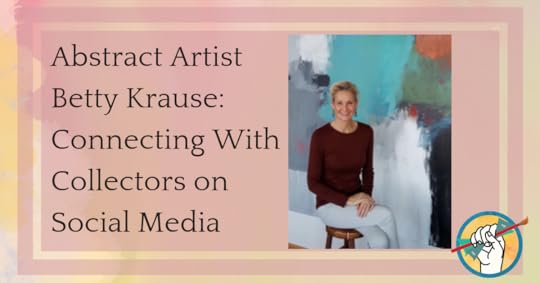
In this episode, we cover:
0:40- What Betty is currently doing with art galleries and how she’s selling her art
2:30- How Betty tells a story with social media in order to sell her art and connect with collectors
5:25- How Betty, who used to be very shy as a child, cultivated her comfort interacting on social media and her approachability
6:45- Betty refers to her work as acrylic painting with mark making- she explains why she identifies her art this way
8:35- How Betty came to better understand her audience and how to connect with them
10:45- Betty caters to two different audiences- she shares why she hasn’t focused exclusively on the higher-end audience
12:30- Advice for artists who hesitate to use social media or share images of themselves with their art.
15:05- How often artists should post on social media
18:00- How Betty’s social media interactions translate into sales
20:00- Focusing on getting new followers vs. focusing on putting out good work
24:45- The different tools that Betty has been experimenting with on Instagram and Facebook
26:40- Betty’s advice for artists getting started
Download Transcript:
Word Doc: Betty Krause Transcript
See Betty’s work here: http://bettykrauseart.com
The post Abstract Artist Betty Krause- Connecting With Collectors on Social Media appeared first on Online Marketing for Artists.
October 2, 2018
The Best Easels for Professional Painters
There are just about as many different types of easels out there as there are different types of artists. How do you choose the right one for your work? We sourced good recommendations from the professional artists in The Abundant Artist Association and put together a list of the best easels for artists, whether you’re an experienced professional or just starting out.
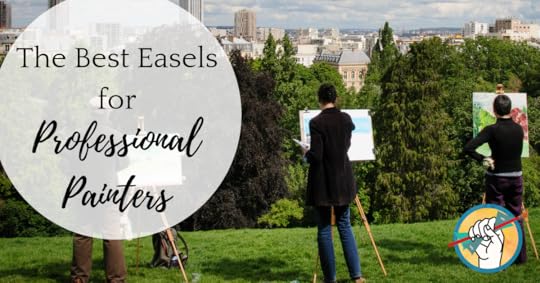
Tabletop Easel
A tabletop easel is a great option for artists working without a dedicated studio space. If you need to be able to quickly set up and work at the kitchen table, a foldable easel like the *Martin Angelina Aluminum Tabletop Easel is a good choice. It also features extra wings that swivel out to support your artwork, and -genius- rubber feet for extra stability.
[image error] [image error]
“There is nothing fancy about this easel, but it’s the perfect size for what I wanted. I’m not much of a painter, but do it occasionally for fun and love this. Fits right on top of my table and I can paint all day with no back pain. Folds up nicely to fit into a little pouch which is included to allow carrying around much easier.” – Amanda, Amazon review
Best for small works, traveling, working outside of a dedicated studio, and can also be used for displaying finished art.
Price range $5.00 – $20.00
Display Easel
A display easel is meant to display finished art. If you’re attending shows you’ll likely want to have display easels in a variety of sizes. An easel meant for displaying art will likely not have all the stability/adjustable features of an easel meant to support works-in-progress. This *T-Sign Reinforced Tripod Display Easel is a good example of an adjustable easel meant primarily for display. It can support up to 25 lbs which makes it suitable for canvas work, and includes a spring-loaded clamp to hold the work in place. (There are other, cheaper display easels on the market, but most reviews indicate that they’re not heavy-duty enough to display most artwork safely.)
[image error] [image error]
“This easel does everything I need. It comes in a durable fabric carrying case with a strong zipper. It is easy to assemble out of only two parts. There is a good limit to the front-to-back spread, which gives it stability. The distance between the front legs is determined by how high you place the screw-tight holders for the separate cross-piece, and which slide-over holes you use on the cross-piece. There are multiple strong built-in clamps to set the length of the legs, from desk-top display to floor-display, and to set the depth of the top clamp for the thickness of your displayed poster or picture. There is a strap on cross-piece that you can use to velcro around the legs when you store this to keep the pieces together, The one thing i didn’t like? I could not get the cross piece to snug against the legs, so it seemed rickety until i put something on display. But i fixed that by keeping a posterboard on the easel, so the whole thing is solid while i am adding or changing items on display. Easy! Another minor note, the depth of the cross-piece can only hold an item about half-an-inch thick. But you can rest a thicker item on it, so for most uses it works fine.” – One Ringtwo, Amazon review
Best for displaying various sizes of finished artwork.
Price range $12.50 – $45.00
H Frame/Convertible Easel
An H-frame easel is the heavy-duty, all-purpose cousin of the standard A-frame design, and a very common choice among professional artists. The H-shaped frame provides much better support across the entire canvas, so you can paint or make marks with as much enthusiasm as you want without worrying about knocking your work off the easel. If you work in multiple medias or desire flexibility, H-frames are often highly adjustable and can convert from vertical to horizontal. Association member Phyllis Green recommends the *Creative Mark Mirage All Media Studio Easel.
[image error] [image error]
“I can work on two paintings at once on it!” – Phyllis Green
Another convertible H-frame option with good reviews amongst Association members is the *Jack Richeson Best Deluxe Lobo Wood Easel.
[image error] [image error]
“I love being able to lay my paintings flat to do add mixed media or detail work. It’s GREAT!” – Beth Picard
Best for All media, artists who need a high level of flexibility or like to move their easel around the space- even outside!
Price range $120.00 – $250.00+
Lyre Easel
Also called an A-frame easel, the lyre easel is a popular choice for casual painters. The rear leg usually folds in for easy storage, and they come in a wide range of sizes from floor to tabletop. The caveat is that they tend not to be as sturdy as an H-frame, there is less support for the painting, and they may not be as adjustable or convertible. These are great for hobbyists and beginners because of the folding style and low price point. A good choice is this *Adjustable Wood Travel Easel by US Art Supply.
[image error] [image error]
“Great art easel. I am a pretty new painter, but this easel was a piece of cake to get set up straight out of the box. It holds everything from my smaller canvases to much larger ones with no problem.” – Jessica S., Amazon review
Best for hobbyists, portability, tabletop painting.
Price range $7.00 – $90.00+
French style
If you paint frequently and want an all-in-one option, a French-style easel will be really appealing. What starts out as a wooden art supply box can be opened up and the legs expanded to become a full-sized floor easel (or a tabletop easel) with built-in materials storage. French style easels tend to be very portable, making them ideal for artists working outside of a studio, whether that’s painting in the kitchen or doing plein air work. A popular choice is the *Tangkula Wooden French Easel.
[image error] [image error]
“I am very happy with my easel. I can use indoors and outdoors and is light enough to carry. The drawer has enough place for the materials. Requires minimal adjustment and can hold small and big canvas.” – Karla, Amazon review
Best for plein air, working both in and out of a studio setting, painters and pastel artists.
Price range $50.00 – $200.00
Pochade Box/Plein Air Easel
The primary difference between a Pochade box and a French style easel is the lack of legs on the former. Also known as plein air easels, they are meant to sit on the ground, in your lap, or on a table top. They fold up into a wooden supply case with a handle for very easy portability, so you can trek into the blue yonder and paint to your heart’s desire wherever you end up. Association artist Nathan Brandner shared his favorite with us: the *Sienna Plein Air Artist Pochade Box.
[image error] [image error]
“I get super excited about materials questions! I use the large Sienna Pochade box for Plein Air painting. It is very light weight and portable. I can have it set up and ready to paint within about 5 minutes.” – Nathan Brandner
Nathan was kind enough to share an image of his Pochade box in action! In this photo he has his easel mounted on a tripod so he can work standing up.
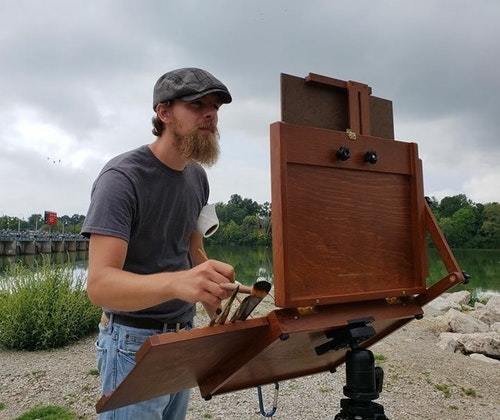 Photo courtesy of Nathan Brandner
Photo courtesy of Nathan Brandner
Best for plein air painting, super portable.
Price range $25.00 – $200.00
Whether you’re a beginner ready to get away from hunching over the table, or you’re a pro ready to upgrade to something that will better support your workflow and habits, there’s an easel out there for you.
Did we leave out your favorite style or brand of easel? Let us know in the comments!
*Asterisk denotes affiliate link
The post The Best Easels for Professional Painters appeared first on Online Marketing for Artists.
September 28, 2018
Brushes with Cancer- Connecting, Sharing, and Healing Through Art
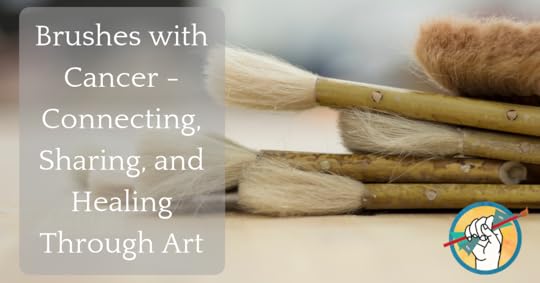
In this episode:
1:30- What is an art therapist, and what do they do?
4:20- What Brushes with Cancer does, how it’s connected with the larger organization Twist Out Cancer, and how Jacquelyn got connected.
7:15- What the application process looks like for artists interested in joining Brushes with Cancer.
8:15- What the process of connecting with an Inspiration looks like for artists who join the organization, how those relationships are formed and how the art is formed from that.
10:55- How interested artists can connect with Brushes with Cancer and apply to be involved in the program.
11:40- Upcoming Brushes with Cancer cities in 2019.
12:40- Where artists need to be located in order to participate, what commitment is required.
Links:
The post Brushes with Cancer- Connecting, Sharing, and Healing Through Art appeared first on Online Marketing for Artists.
September 27, 2018
Recommended Web Designers
We are often asked for designers who can build websites for artists. Here’s a list of our preferred partners. If you want to DIY, we recommend Squarespace or Shopify.
DIY Programs with Help
If you’re an artist who wants to DIY, but would like a little bit of help, these programs offer some hand-holding.
Pre-Game HQ Starter Site program. If you live in Portland, Pre-Game’s program is in person on site. $1495.
Squarespace Specialists
Squarespace is TAA’s top builder on our website guide. It’s easy to use, and handles simple ecommerce well. These designers specifically build Squarespace sites.
Kerstin Martin has a done for you program that will get your site up and running in 3 days for $2250.
Janessa Rae is also a Squarespace certified trainer and offers a variety of website packages.
Top Designers
For high end professional sites that are custom built from the ground up. These designers typically start at $5,000 or more.
16 July, Evan Leah Quinn – she built TheAbundantArtist.com. 
September 26, 2018
Top 5 Online Watercolor Classes
Have you ever taken an art class online? A quick search online reveals that there is a large market hungry for art tutorials. Artists who are willing to take the time and effort to produce courses and market them correctly can potentially reap the benefits for years after putting in the initial work to create them (did someone say passive income?)
This is especially true of watercolors, which have a reputation among artists of being the hardest medium to master. If you’re a watercolor artist, the relative difficulty of the medium makes it an excellent option for creating online tutorials to uncover the “secrets” of how to paint with watercolor… and add an extra stream of revenue to help support your goal of living a creative life on your own terms.
We’ve put together a list of the top 5 online watercolor classes. Check them out for some inspiration- and if you’re looking to learn watercolors, here is a great place to start!
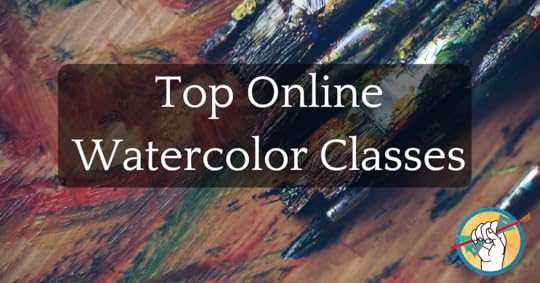
Rebecca Rhodes
Cost $29-$215, depending on size of course
Subject(s) Realistic watercolor animal paintings and pet portraits
Structure/method Rebecca uses the Teachable platform to offer a couple of free courses as well as monthly and annual subscription access to her library of paid courses. She also offers one-on-one tutoring
Anna Mason
Cost eur 12.42 – eur 18.99 per month
Subjects(s) Realistic watercolor paintings of objects and botanicals
Structure/method Anna offers her tutorials on a subscription basis as streaming videos. The online school includes a community aspect for other students to provide feedback. Her school also includes a Knowledge Base library of basic techniques, as well as sketchbook exercises.
Angela Fehr
Cost $99
Subjects An expressive and impressionist style of watercolor painting. She emphasizes a loose, fluid, intuitive style.
Structure/method Angela’s courses include warm ups and exercises, a student gallery, and lifetime access to the course. She also offers a yearly subscription to her live lesson library, and offers 16 of her courses bundled together for a massively discounted price.
Jerry’s Artarama
Cost Free
Subjects Both realistic and impressionist styles of watercolor painting, different instructors.
Structure/method A little different from the other entries on this list, Jerry’s Artarama is an art supply store with a vast collection of free online mini-courses in a wide variety of artistic mediums. The watercolor section is crammed with short, free video tutorials on everything from stretching and prepping canvas to how to paint a realistic nose.
Nitin Singh
Cost Free
Subjects Impressionist watercolor painting, including methods like plein air
Structure/method Nitin Singh offers his tutorials for free through his website and on YouTube to an audience of 33k subscribers. In addition to monetizing his videos on YouTube, he directs viewers to support him on Patreon.
Want more?
If you’d like to learn more about how to teach art online, check out our interviews with artists selling online courses:
Also check out our piece on How to Make Money Teaching Art Online and our compilation of the Top Multimedia Online Art Classes.
Did we leave out an awesome watercolor course, or do you teach watercolors online? Let us know in the comments!
The post Top 5 Online Watercolor Classes appeared first on Online Marketing for Artists.
September 25, 2018
How to Use Social Media as a Selling Tool
Since taking Cory’s course on increasing social media following, I have been relentless in using social media as a selling tool.
One of the things I took to heart from the social media course was that we need to act as if we are speaking with people in person. That means we are not always talking about ourselves, our art, or our process. In a social setting, we have interactive conversations. So how does that translate to writing posts and engaging with people on social media?
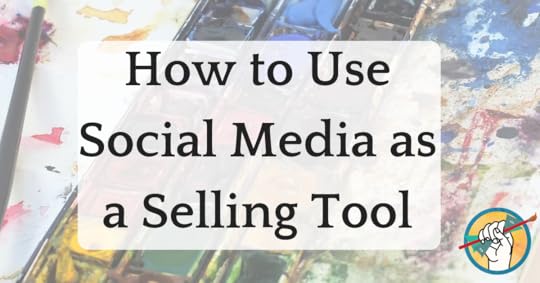
If a person is interested in a piece of your work, ask them why? Ask them what about it is stimulating to them? As they answer, the dialog moves from the art to a deeper conversation. Quite often these conversations move from the original post to messenger where we have a much deeper interaction. It is through these interactions that the collector gets to know me and I get to know them. It’s that connection that helps solidify their decision making process.
When my friends describe me, they say I am energetic and have a good sense of humor. So, how can I convey that on social media. When create a post I write as if I were describing the image to my best friend. I laugh at myself. I often find funny things to share. I use a lot of “OMG” and “I’m so excited” language in my posts because that is how I am in face to face conversations.
Determine how much of yourself you want to reveal in your posts. People truly do want to get to know you. What aspects of yourself are you willing to share? Because the message of my art and jewelry is of healing and of finding your better self, I reveal little glimpses into my own personal journey. I’m not comfortable telling the entire story, but I share enough to form a connection. I start a tiny conversation and I am honored to receive messages from people about their own journeys. They tell me their stories and I listen as if we were talking over coffee.
I’m busy and don’t have time to read long posts, so I keep my posts short and sweet because I assume my collectors feel the same way. Each post only conveys only one thought. When I post WIP’s, it’s with enthusiasm about where the piece is going. When I post images of me shipping something to a lucky collector, it’s with gratitude.
Some other ideas include:
Post teasers which would include segments of an image and ask your audience where they think you are going with the piece.
Post a progress WIP collage and talk about how the piece changes over time ask for comments about that process
A finished piece but talk about the emotions behind the piece
A messed up piece and talk about how you handle mistakes
If your process is interesting and unique, show segments. People love to see how things are made.
Post little videos of you working. Again, people love to see this.
Rather than posting straight on shots of your work, provide a studio shot with just a glimpse of your new piece. I can’t tell you how many times, people have zoomed in on a piece and inquired (and bought) it from those kinds of shots.
Currently Facebook loves groups. This is the place where you can go meet people. Join groups where you and the members have similar interests. This is the virtual version of clubs. This is where you’ll meet people and be able to slowly introduce what it is that you do. From there, it’s a matter of networking.
The second way to use groups is to create a group that acts as a virtual co-op gallery. This is the virtual version of a brick and mortal co-op gallery. In the brick and mortar version, several artists get together, rent a space, hang their art, work a shift, and sell their work. A social media group can be created in such a fashion that it acts the same way. There are several of these types of groups on Facebook and they have been very successful. Some of these groups accept applications for new artists. Some invite guest artists to show. Some host monthly themed events, some host weekly events, and some host fundraising events.
The more you post and keep showing your work, the more visibility you will get. The more you share in groups, the more visibility you will get. The more you find your “signature”, the more your work will be recognized. It takes time, and perseverance, but can be worth it in the end. As Cory says, “You need to get your work in front of as many eyes as possible.”
Here are some of my posts that resulted in sales fairly quickly. This first one blew me away. This single post resulted in 4 sales within a 24 hour period.
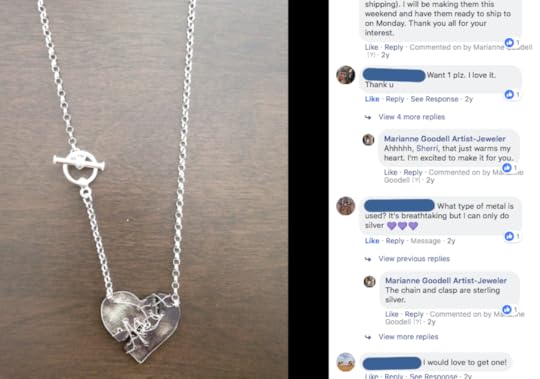
I play around with posting just to Instagram and seeing what will happen. With this post, I had painted to relieve some stress and was so excited with the piece. I just posted it to IG with a blurry photo an all. It was dark here and I wasn’t really thinking about selling it. I have my IG set to share to my FB business page as well. Within 5-10 minutes, I had two PM’s on Facebook asking for the piece. Both people saw it on IG and responded immediately. I sometimes do this for fun usually with studies. I later edited my text to say SOLD to stop the inquiries.
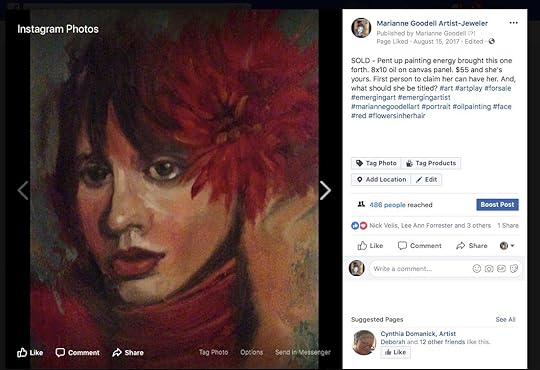
With this post, I also posted to both IG and FB. This was a WIP teasing kind of post. People started getting excited about what was coming.
Within a week (it took me that long to finish them) I posted this collage. Between the two posts, a completely new person found me on IG. I have no idea how. Each person ended up buying a piece from this series. And, I had a long conversation with several people about this series. From this single post four of the five pieces sold.
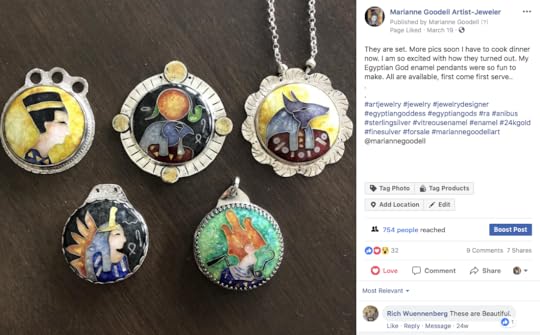
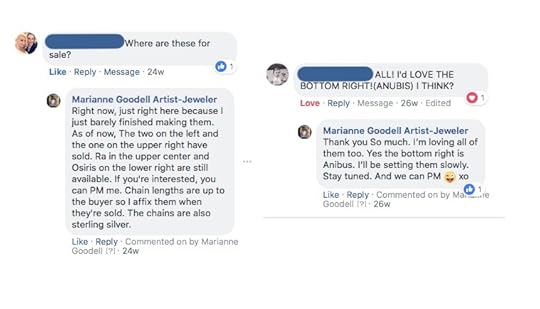 Find your people, engage with them, ask them questions, get them excited because you’re excited. Really take Cory’s message of social media being an on-line party to heart and act on there as you would in real life. It comes through and people respond.
Find your people, engage with them, ask them questions, get them excited because you’re excited. Really take Cory’s message of social media being an on-line party to heart and act on there as you would in real life. It comes through and people respond.
 Marianne Goodell discovered the healing qualities of symbolism in art through her own depression. She was drawn to symbols and how they could be used as reminders to deeper self understanding.
Marianne Goodell discovered the healing qualities of symbolism in art through her own depression. She was drawn to symbols and how they could be used as reminders to deeper self understanding.
She divides her time equally between figurative painting and creating enamel and silver jewelry. Images in her jewelry become paintings and vice versa. In either case, both have elements of healing and are highly symbolic. Invoking healing and growth is one of her main focuses with the intention of inspiring growth and healing.
The post How to Use Social Media as a Selling Tool appeared first on Online Marketing for Artists.
September 21, 2018
Case Study: Flower Painter Anita Nowinska on Leveraging Influencers
Anita is a painter whose primary subjects are gardens and flowers. We’ve written about Anita and her impressive work ethic before: A Case Study in Hard Work. She has been making a living from her art for the past 12-15 years, but it wasn’t until she took the How to Sell Your Art Online courses that her career kicked into high gear. We sat down with Anita to hear how she’s been creating momentum in her career by taking advantage of Instagram influencers.
Anita: “I’ve been making a living from my art for the past 12-15 years while juggling being a single mother, and doing other things. So the art wasn’t my main focus, I wasn’t spending enough time on it. But I was just getting by on the odd commission and the odd sale here and there. And when my little boy was old enough to be a bit more independent I decided to step it up, which is when I found your courses. I found the How to Sell Your Art Online course, and I really dived in to that the summer before last with a vengeance. I found that because of my timing, I had to do things slowly. I had to do them a little bit at a time, not during the few weeks of the program, but over a period of months. But I literally followed everything to the letter. “
“I dived in to How to Sell Your Art Online with a vengeance… I literally followed everything to the letter.” – Anita Nowinska
Anita kicked it into high gear as she learned more about how to market her art effectively. She worked harder and harder, and began to see momentum in increased sales and interest in her art on social media. This momentum motivated her to work even harder.
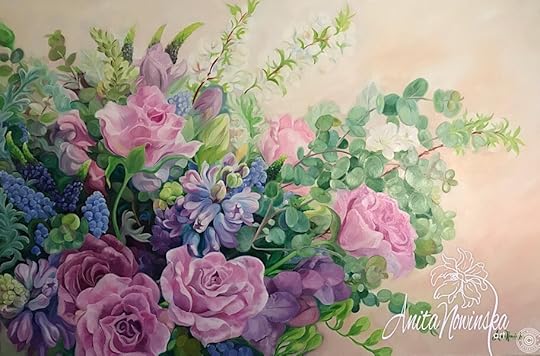
“Serendipity”, Anita Nowinska
Anita: “And that’s where it all went wrong.”
Anita shared with us that though she was working as hard as she possible could and then harder still, her focus was scattered.
Anita: “I’m an ideas person. I’ve constantly got stuff firing out of my face like brain farts. I’m trying to do this and trying to do that. I was wondering why nothing that I was doing was working anymore after September when things had been going so well. And you (Cory) put me straight very very quickly. Literally within ten minutes of chatting to you, you said “You’re burnt out.” And when you said that it really hit home, how tired and exhausted I was, and that I couldn’t do everything for everyone all the time. I would say that if you’ve got backup and support and you’ve got someone bringing in another income, it’s much easier to do that. But if you are a little bit older and trying to do absolutely everything, there is only so much you can do. I started thinking, what went wrong? So I looked at my whole great big list of all the ideas I had. And I thought, my mailing list at the moment is 500 people. They have now had monthly emails, they know about me, a lot of them have bought, some have bought more than one. But there’s only so much I’m going to get out of that 500 people.”
After this realization, Anita realized that she needed to leverage someone with a much larger audience.
“I realized that I couldn’t cover Instagram, Facebook, LinkedIn, Tumblr, and Pinterest every single day and make a comment on everybody’s post. I had to get other people to do the work for me.” – Anita Nowinska
Anita: “My first realization was ‘I have to hit much much bigger numbers of people who are interested in my work.’ I did the 301 course that covers collaborations and influencers, and I suddenly thought ‘Right- how do I get other people doing the work for me so that I don’t burn out again, so that I’m not the one doing all the work?’
I realized that I couldn’t cover Instagram, Facebook, LinkedIn, Tumblr, and Pinterest every single day and make a comment on everybody’s post. I had to get other people to do the work for me. So I just said ‘Right, I’m gonna focus on Instagram.’ Just on Instagram. I liked what it looked like, I liked what was going on there, and it was easy to use.”
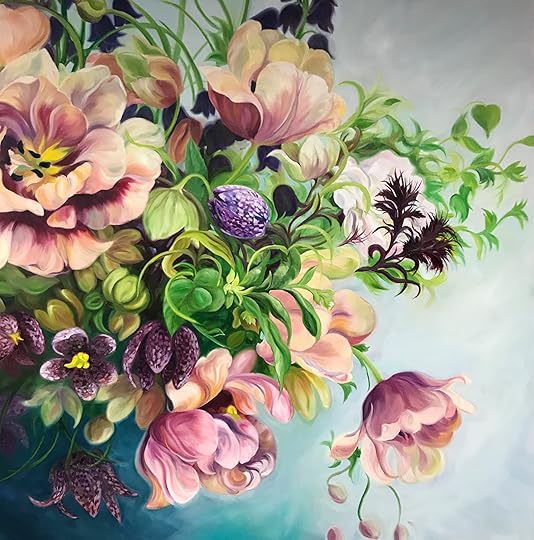
“Sensibility”, Anita Nowinska
Rather than approaching her customers directly, Anita decided to target influencers with large followings who shared a target audience with her. She pursued only those who had 15,000 or more followers on Instagram, and began cultivating relationships.
Anita: “I started approaching influencers. I realized that when you’re working with influencers and you want them to do stuff with you, you’ve really got to be on the ball. You’ve got to offer them something, and perhaps have something in common with them. So I went for the obvious, interior designers. And the way it worked for me is that I spent about three or four weeks on each one that I targeted. Every single post they put up, I’d make a good comment, a proper comment. Not just “beautiful,” or “wow,” but an actual pertinent comment in regards to their post. So I’d make a comment that looked as if I had read their whole post, that I’d bothered.
After a while, they started responding back. Once I had a couple of comments back from them, I then private messaged them, but not before. I worked out that if you messaged them before you’ve got that back-and-forth going, there’s no point, because you’re just another person knocking on their door. And it actually felt like there were relationships developing. I sometimes offered them a print if they would share my work or if they would write a blog post about me.”
“When you’re working with influencers and you want them to do stuff with you, you’ve really got to be on the ball.” – Anita Nowinska
As Anita worked slowly to develop these relationships with prominent interior design influencers (some of which took as many as five months before actually sharing her work), she began to reach out to forge some real-life partnerships as well. With the initiation of Brexit, Anita searched for shades of positivity… and she found them in the shades of locally-grown British flowers.
Anita: “I decided to target UK British flower growers and to help promote awareness that in the UK we have our own flower growers, that we don’t need to import them. I started talking to them about this idea, saying ‘I’ll tell you what- I’ll paint one of your arrangements, you put me on your feed.’ And that started it all off.
Then I started thinking, how do I get an exhibition going? I said, ‘How about I do an exhibition of all these paintings of your flowers to promote Britain’s flowers?’ They started suddenly getting really excited. The next thing I knew, I’ve got big influencers phoning me saying ‘I’ve heard about this project that you’re doing, would you consider painting one of mine?’
Then I took out my old bucket list of the places I’ve always wanted to exhibit before I drop dead. I thought ‘forget that- I’m doing it now.’ So I phoned up a place called RHS Garden Wisley, which is one of the biggest and most amazing gardens in the UK. I told them about the project, and they said I could have their entire very very famous glass house. Then she said ‘This is so amazing, we’ve got our flower festival in September,’ which would cost me $15,000 pounds normally to have a stand there, she said ‘Why don’t we give you the whole glass house during the flower show when we have a hundred thousand visitors coming through the door?'”
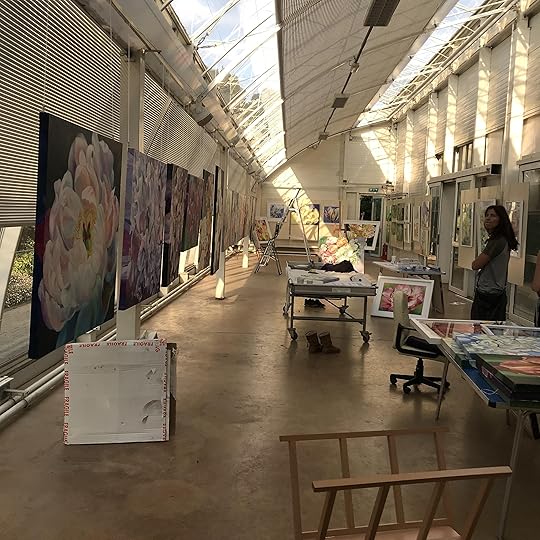
Anita’s exhibition at RHS Wisley
Filled with new confidence, Anita managed to soon after book a summer show for next year with the Eden Project in their new exhibition hall.
“I’m painting like a lunatic… I tripled the price of my work.” – Anita Nowinska
Anita: “I’m painting like a lunatic. I’m painting all day in the studio, then coming home putting the sketches on the canvases to take to the studio to paint. I decided that last year I burnt myself out trying to sell lots and lots of paintings for £500, £1,500, and only the odd one that went for £3,000 or £4,000. But it was a lot of small sales, a lot of prints. So I decided to take a really massive risk. I had 65 prints available on my website. I’ve taken them all down apart from 10. Bizarrely enough, now everybody wants one of the prints.
The other thing that I did was triple the price of my work, and the price hike doesn’t seem to have had any detriment. If anything, clients are now even saving up for one, or I’m simply getting into a new market.”
Anita has seen tremendous success in 2018 that came as a result of hard, consistent work beginning with implementing all the strategies taught in How to Sell Your Art Online. She outlined for us how she has been so successful forming partnerships with very high-profile influencers:
Search relevant tags on Instagram, take note of the core group of influencers using those tags.
Find out where else they spend their time, such as professional organizations, and find the member lists.
Offer them something in return.
Let your passion shine through when you contact influencers.
Make a high quality press pack for contacting publications. Spend the money on a graphic designer to make sure it’s very professional looking.
Track your exchanges with influencers to learn what works: save your conversations and take note of changes in your sales, followers, engagement, etc. as a result of working with them.
The final word from Anita is to keep at it.
“Just keep at it. Keep at it and it does work eventually, it really really does.” – Anita Nowinska
 Anita Nowinska is best known for her sensuous flower paintings , landscapes & images from nature, which have received much acclaim. Original works are widely exhibited and sold worldwide through solo exhibitions, commissions and galleries as well as larger projects through designers & architects, hotels, hospitals & commercial spaces. She produces paintings & commissions and a range of quality limited edition prints and unique products featuring her paintings. See more at http://nowinska.co.uk. You can follow her on instagram at @anitanowinskaart
Anita Nowinska is best known for her sensuous flower paintings , landscapes & images from nature, which have received much acclaim. Original works are widely exhibited and sold worldwide through solo exhibitions, commissions and galleries as well as larger projects through designers & architects, hotels, hospitals & commercial spaces. She produces paintings & commissions and a range of quality limited edition prints and unique products featuring her paintings. See more at http://nowinska.co.uk. You can follow her on instagram at @anitanowinskaart
Download:
Influencer Outreach Tracking Sheet
(Click File, Download As to save a copy to your computer for personal use)
If you are interested in learning more about how to leverage influencers and PR to grow your business, check out How to Sell Your Art Online 301.
The post Case Study: Flower Painter Anita Nowinska on Leveraging Influencers appeared first on Online Marketing for Artists.
September 20, 2018
How to Facilitate Masterminds with Sarah Guthrie

In this Facebook Live conversation, Cory chats with mastermind group facilitator Sarah Guthrie:
2:38- What is a Mastermind group? Recommended reading includes Think and Grow Rich.
6:15- How Cory started his first mastermind group, and the important things to consider when getting started.
8:12- Sarah’s experience being involved in mastermind groups, how they made a difference for her in her business.
9:50- Sarah’s shares her facilitation background and how she now translates that to assisting other artists in clarifying and meeting their goals.
11:25- How mastermind groups are typically run. At the core is finding a group of people you feel comfortable with who can also share their knowledge with you, and vice-versa.
13:00- Matching up with another anchor person whose personality balances yours can be really useful for forming a good group.
15:55- Why high level mastermind groups cost so much.
16:33- The main difference between peer mastermind groups and paid mastermind groups. (That’s where Sarah comes in!)
17:30- How Sarah runs accountability groups as a coach rather than a peer, what the structure looks like.
23:00- TAA is now launching the next version of the mastermind groups, how to apply.
24:24- How to set proper expectations for your paid or peer mastermind group.
27:15- What additional support is typically provided in mastermind groups including TAA’s mastermind groups.
30:48- Questions and answers, including whether TAA’s mastermind groups will be ongoing and how much they cost.
34:20- The impact of mastermind groups for artist entrepreneurs and their unique challenges.
37:25- The grounded space of a mastermind group can help all your other relationships in life.
38:15- Are there mastermind groups for people at the very beginning? Where beginning artists can go instead.
Links:
* denotes affiliate link
The Abundant Artist paid Mastermind groups application
Think and Grow Rich by Napoleon Hill*
How to Sell Your Art Online by Cory Huff
The Twelve Week Year by Brian Moran*
The post How to Facilitate Masterminds with Sarah Guthrie appeared first on Online Marketing for Artists.
September 19, 2018
How to Make Money Teaching Art Online
What are you an expert at? Take a few moments and think about what it is that really gets your creative juices flowing. What could you talk about for hours on end without getting bored? When others see you do something, do they exclaim over how easy you make it look? If so, you’re a great candidate to make money teaching art online!
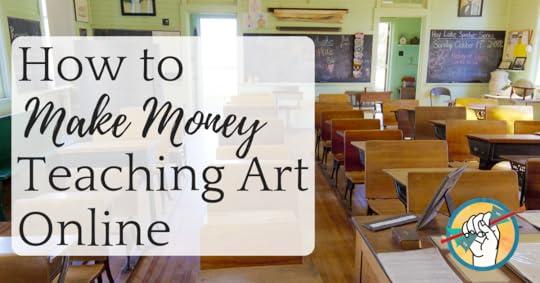
Creating art tutorials and selling them either on your own website or through an online education marketplace like Udemy, Teachable, or Skillshare is a savvy way to supplement your art income as well as extend the reach of your brand and get more eyes on your work. What are some factors that contribute to being successful teaching art online?
You must have something to teach
You must be willing to put in the work to create the tutorial and then market it. This can be very time consuming.
You need the appropriate technology. Fortunately, there are a lot of free and inexpensive apps and programs out there for both PCs and Apple products. If you have a smartphone and a laptop, you can create an online art tutorial.
Artists Selling Art Tutorials Successfully
In case you need a little extra convincing of the viability of selling art courses online, here are a few examples of other artists doing it successfully:
Rebecca Rhodes, watercolor artist. We just held a Facebook Live with Rebecca Rhodes where she shared what is working for her as she sells watercolor tutorials online. She retired early from her job as a music teacher to pursue being a full-time artist, and is now halfway to her income goal and moving upward steadily! Listen to or read our interview with her here.
Kelly Rae Roberts. Kelly Rae has created a very recognizable brand from her personal style of creativity, and she sells a variety of workshops and creativity courses that do very well and receive excellent reviews. Check out our interview with Kelly Rae Roberts here.
Flora Bowley. Flora sells her work in galleries and online and also licenses her art commercially. In addition, she sells online courses and workshops through her beautiful website. Check out our interview with Flora here.
Case Study: Bill Inman
Another artist successfully selling art tutorials online is oil painter Bill Inman. Bill offers free art lessons on his website as well as longer paid courses, a website membership, and even a DVD set. We chatted with Bill Inman about how he built his thriving art tutorial business and what he’s learned along the way.
How He Got Started
In 2006, Bill didn’t have any time for teaching. He was a working oil painter, busy sending inventory out to galleries. 2006, however, is also the year YouTube appeared on the scene, and soon enough artists began to take notice.
A few years later, Bill decided to purchase a training video from Scott Powers to study how other artists were creating tutorials. The video he purchased was 6 hours long, and cost $165. He was under the impression that the video would show every part of the painting process, but he was surprised to find that- particularly for the price- it was significantly edited down.
Roadblocks
That video was the catalyst that helped Bill decide to create his own tutorial. His first video was a tutorial on how to paint a rose. He decided to show every single step of one of his rose paintings. The big question was how to do it without it being 20+ hours long. In 2012 Bill finally produced the video. It took him 5 months to figure out how to record it, edit it, and upload it to the internet.
The answer to Bill’s question of how to shorten the video while still including the entirety of the painting process was aggressive editing to cut out everything except the brush strokes and all of the color mixing. This meant editing out every sneeze and nose scratch, which explains why it took so much time.
Bill began posting snippets to YouTube, which was very time consuming. Meanwhile, viewers and fans were asking for full courses. Finally, Bill and his wife agreed that they wanted to create a full course. They weren’t going to skimp on the details despite how time consuming it would be; the course needed to include everything that Bill was being regularly asked about: how to prepare panels, choose brushes & paint, and his signature painting techniques as well as the principles of value, color, composition, and finally putting on the finishing touches.
What He’s Learned
Email marketing is key. In October of 2016 Bill’s mailing list had about 1,200 subscribers. He now has over 13,000 and uses an email sequence to stay front-of-mind with his subscribers.
You have to spend money to make money. Bill shared with us that he spends $750 per week on Facebook ads.
You can’t rely on any single platform to sustain your business. Last year, YouTube changed their algorithm resulting in a significant dip in views and subscriber growth for Bill’s business. Make sure that you have other sales channels and marketing avenues that you can pursue to spread the word about your courses, just in case one goes sideways.
Platforms for Teaching Art Online
These are a few of the most popular online teaching platforms. They all function a bit differently. Udemy and Skillshare are searchable marketplace platforms, while Teachable requires you to do all your own marketing and functions more as a teaching utility. There is, of course, also the option of just selling your courses through your own website (you’ll notice several of the artists we profile here have gone that route.)
Final Thoughts on Art Tutorial Businesses
Learning how to make money teaching art online can be time consuming up front. The good news is that there are just about as many different ways to succeed at it as there are different subjects to teach. If you’re interested in getting started, you have the advantage of the numerous interviews and case studies we’ve done with artists who are already teaching art online successfully:
Top 9 Multimedia Online Art Classes
We’ve helped several artists get their online art class businesses up and running. If you’d like to talk to us about making that happen for yourself, check out our coaching page.
Are you teaching art classes online? We want to know about it! Let us know in the comments.
The post How to Make Money Teaching Art Online appeared first on Online Marketing for Artists.
September 12, 2018
How to Teach Art Online with Watercolor Artist Rebecca Rhodes
In this Facebook Live conversation, Cory chats with watercolor artist and teacher Rebecca Rhodes.
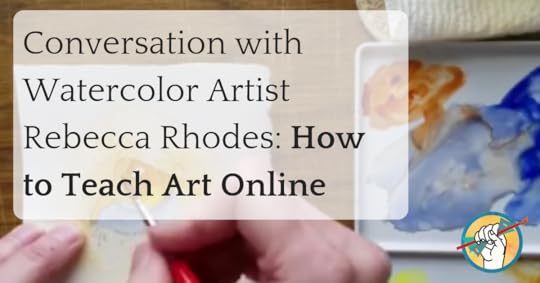
1:30- How Rebecca went from a music teacher to a full-time artist, and how her creative family encouraged her in her pursuit.
6:00- Navigating the practicalities of the transition from teaching music in-person to teaching art online.
8:32- The apps and software Rebecca uses to record and edit her videos.
10:18- How Rebecca uses YouTube as a sales funnel to turn interested video viewers into paying subscribers using the Teachable platform.
12:53- How Facebook, Instagram, and Pinterest compare to YouTube for the purposes of converting followers into paying subscribers.
14:55- How Rebecca makes money through Teachable.
16:20- How Rebecca supplements her teaching income, and how she chooses which art shows to attend.
18:48- Rebecca’s advice to other artists interested in getting started teaching online.
Download Transcript:
PDF: Conversation With Rebecca Rhodes
Word Doc: Conversation With Rebecca Rhodes
Links:
The post How to Teach Art Online with Watercolor Artist Rebecca Rhodes appeared first on Online Marketing for Artists.
The Abundant Artist Goodreads blog
- Cory Huff's profile
- 31 followers




